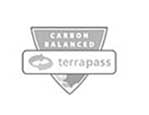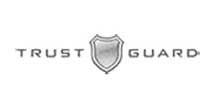Mold
Everyone is afraid of black mold, and for good reason. It destroys our homes, costs alot to remediate, makes it impossible to sell, and can cause serious health problems. Mold is a sign that moisture isn’t evaporating fast enough to keep mold from growing. Mold spores love dark and moist areas.
The mold spores feast upon particles and moisture trapped in the cheaper insulations like fiberglass. You’ll often hear people that sell fiberglass say fiberglass doesn’t feed mold. They’re technically right. The problem is fiberglass provides the means to trap particles and moisture. These particles provide the food the mold needs to grow and spread.
Unfortunately, the first signs of mold are often late in the cycle. You may see unsightly black spots, or have allergies or more serious health problems. These are the tip of the iceberg so to speak. As you pull down your walls you’ll find a huge colony underneath that dwarfs whatever you’ve seen up to that point.
Mutants
Walls and attics are wonderful spots for rodents and insects to hide. They’re warm, dark, and much safer than outside. Plus there’s plenty of food in a home to keep them happy and breeding. The cheaper insulations leave plenty of wiggle room for these pests to enter your home and set up their nests. It’s good bedding to make more of themselves. The first real sign of trouble will be when you discover a mouse or roach or ant. Where there’s one, there’s many more.
Music
Whether it’s a neighbor, a teenager’s music, or just walking up and down the stairs, the everyday noises of living can drive a home’s perceived value much lower. It’s almost like seeing in and through the walls of the home. Let’s call it a sonic x-ray.
Many insulations leave air pockets and plenty of room for air to transfer from 1 space to another. In other cases, it can be a lack of structural integrity that lets the stairs creak. Not many insulations can help on stopping sound transfer, but a tight air barrier from open or closed cell foam can.
Money
It costs money to heat and cool a home. If the air that’s been heated or cooled just goes straight out of the home through holes then it is wasted energy and money. It’s like trying to fill a bucket with holes in it. As fast as you can pour water in it, it’s leaking out the sides.
Now this would be frustrating in the best of cases, but with energy costs skyrocketing, it’s unsustainable. Worse still, massive investments in alternative energy sources will keep energy prices going higher for the next 50 years.
That means people won’t buy buckets with holes in them. People won’t buy homes that waste energy. In fact a 2008 study showed that even despite the housing bubble bust, 80% of buyers would pay more for an energy efficient home. So not only should you seal your holes for the short term, but also as part of your longer term investment.
Fixing it
This may not be relevant to you but closed cell spray foam can address any or all of these issues quickly and easily. In no time, your worries of mold, music and money seeping through your walls can be put to rest. If you want to see a quick video on how your walls can be sealed, check out THIS VIDEO.









